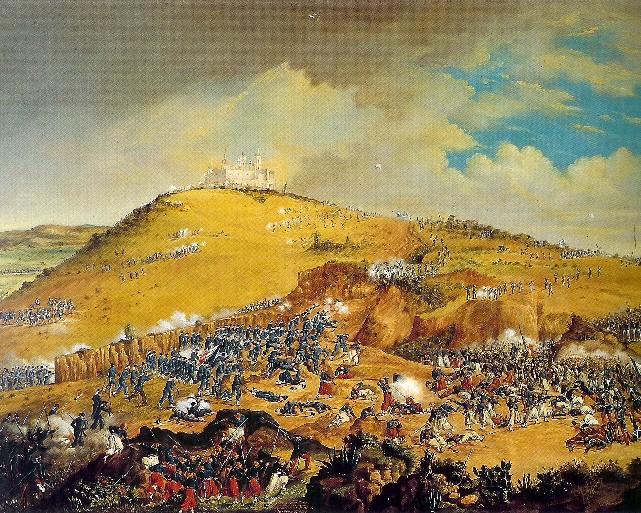Effects of the Mexican Revolution
5.3.2c by Anna Dengler
|
Unlike the American Revolution, however, the Mexican Revolution had effects quite opposite. The revolution finally came to an end around 1821, and the Mexicans struggled to pick their country back up. Since the revolution was so long and gruesome, over half a million Mexicans died, and all their mining, industrial and agricultural production stopped during the war. Mexico had a far greater struggle to agree on a well working government, which took up a lot of the people’s time and effort, causing Mexico to fall behind economically and intellectually.
The next 30 years were spent trying to find a government that would work well for a majority of the people. This endeavor was very tiring and resulted in close to 50 governments. Over time, Mexico became divided into two different political groups: the Liberals and the Conservatives. As in America, these two political groups disagreed over nearly everything, from education to work, church influence, the army and more. Conservatives strived to maintain the way Spain governed Mexico, whereas the Liberals wanted a government closer to that of the United States. Finally, in 1833, General Antonio Lopez de Santa Anna took presidency of Mexico. Though he was a good president, the Mexican territory was far too big for him to be able to extend his rule effectively. Present day Texas declared independence in 1836 and was ultimately annexed by the United States. This act led to the Mexican-American War, which would end up devastating Mexico more. Mexico was largely outnumbered and America’s war technology was far superior to that of Mexico. To end the war, Santa Anna signed the treaty of Guadalupe-Hidalgo in 1848, in which Mexico would sell more than half of its territory, including present day Arizona, Colorado, Nevada, Utah, New Mexico and Texas. This would turn out to be a dire mistake for Mexico, since these territories were rich in potential economic flourish, including rich soil and mining opportunities. Eventually in 1857 a Constitution was created, which established a Federal Republic, mimicking the government the United States have in place. This, however, led to a 3-year civil war between the Liberals and Conservatives, since the Conservatives didn’t agree with the Constitution what so ever. After the Mexican-American War, the 3 year civil war and the 30 year struggle to establish a well working government, Mexico was poor and far behind in economic and technological advancements. The current president at the time, Benito Juarez, declared that Mexico was too poor to repay debts to Europe, which led England, Spain and France to send armies to Mexico to obtain those debts by force. After many negotiations, Spain and England left peacefully, France however did not. France attempted to impose a monarchy on Mexico many battles started to take place, and France eventually took over Mexico city and pushed the Mexican forces all the way to the United States border, who were currently busy in their own civil war, thus not being able to aid the Mexicans. France eventually established the French Empire in 1864 and sent their armies home, and Austrian Archduke Maximilian to govern Mexico. With no French forces in Mexico, the liberals were able to execute Maximilian and took back control of Mexico. This war with France turned out to be pointless for France, but took another huge toll on Mexico. Ultimately, after breaking free from Spain, Mexico had a turn of many unfortunate events, leading it to fall behind in the ongoing race to be economically and technologically superior, leading them to never be able to catch up with nations such as America, England and the rest of Europe. Due to Mexico’s inability to establish a well working government after their revolution, the Mexicans spent all of their time and efforts trying to establish a government that would please everyone, and fell behind in trading, creating surpluses to trade, establishing new resources, and creating a strong military. Not only did this take a toll on Mexico, the loss of their northern territories to America led to an even greater leap behind the rest of the world, since now Mexico lost some of the best areas to farm, mine, and create new resources. This was due to their inability to create a strong army in their initial 30 years of being a free nation. The Mexican revolution could have turned out to be as successful as the American Revolution, but the Mexicans were incapable of establishing a good government in time, which led to their eventual downfall of a nation that could have been great and flourishing. |




